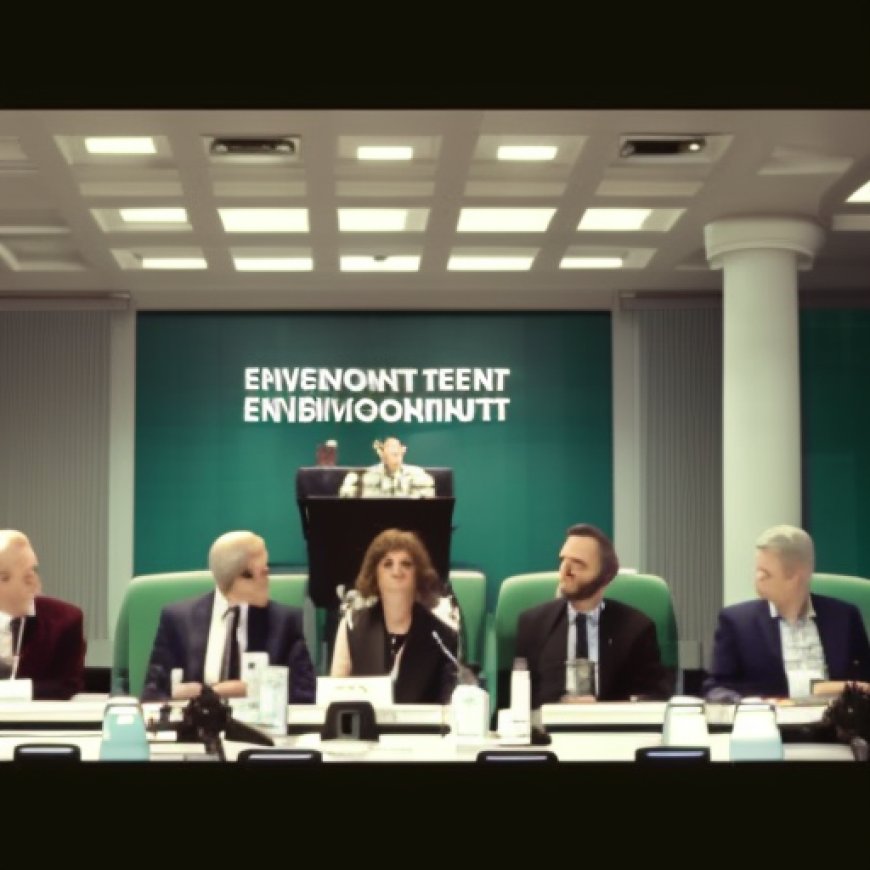Environment committee discusses Citizens’ Assembly on Biodiversity Loss report
Environment committee discusses Citizens' Assembly on ... Agriland


Oireachtas Committee Discusses Citizens’ Assembly Report on Biodiversity Loss
The Oireachtas Committee on Environment and Climate Action convened today to discuss the final report of the Citizens’ Assembly on Biodiversity Loss. The report contains 159 recommendations aimed at protecting biodiversity in Ireland, with 17 specifically addressing agriculture.
Balancing Economy, Society, and Nature
The chair of the Citizens’ Assembly on Biodiversity Loss, Dr. Aoibhinn Ní Shúilleabháin, emphasized that the report aims to strike a balance between the economy, society, and nature. She highlighted the importance of supporting farmers, as they own 70% of the land and play a significant role in finding solutions to biodiversity loss.
Dr. Shúilleabháin stressed that the focus should shift from maximizing production outputs to optimizing farm practices within environmental limits. Farmers who addressed the assembly expressed their willingness to adapt to policy changes, but emphasized the need for meaningful, widely available, and long-term support.
Nature’s Role in Providing for People
Dr. Shúilleabháin underscored the importance of supporting farmers in their work, as it ensures that nature can provide both food and ecosystem services for people. She highlighted the alarming statistics on Ireland’s biodiversity loss, such as the disappearance of 30% of semi-natural grasslands and the unsatisfactory condition of almost 50% of freshwater systems.

Citizens’ Assembly Recommendations
Dr. Shúilleabháin clarified one recommendation that proposes the introduction of a sector-specific levy or charge on agricultural exports and retailers. This levy would contribute to the funding of biodiversity conservation and restoration in Ireland.
During her address to the committee, Dr. Shúilleabháin expressed her respect and appreciation for farmers, who are the custodians of nearly 70% of the Irish landscape. She called for the state to acknowledge and reward farmers for their vital work in producing food while caring for nature and wildlife.
Following today’s committee meeting, the Oireachtas Committee on Environment and Climate Action will produce its own report, which will be responded to by the government.
SDGs, Targets, and Indicators
-
SDG 15: Life on Land
- Target 15.1: By 2020, ensure the conservation, restoration, and sustainable use of terrestrial and inland freshwater ecosystems and their services, in particular forests, wetlands, mountains, and drylands, in line with obligations under international agreements.
- Indicator: The disappearance of semi-natural grasslands, the state of the marine environment, and the condition of freshwater systems mentioned in the article can be used as indicators to measure progress towards this target.
-
SDG 2: Zero Hunger
- Target 2.4: By 2030, ensure sustainable food production systems and implement resilient agricultural practices that increase productivity and production, that help maintain ecosystems, that strengthen capacity for adaptation to climate change, extreme weather, drought, flooding, and other disasters, and that progressively improve land and soil quality.
- Indicator: The need to optimize farm practices within environmental bounds and the importance of supporting farmers to ensure nature can provide food can be used as indicators to measure progress towards this target.
Table: SDGs, Targets, and Indicators
| SDGs | Targets | Indicators |
|---|---|---|
| SDG 15: Life on Land | Target 15.1: By 2020, ensure the conservation, restoration, and sustainable use of terrestrial and inland freshwater ecosystems and their services, in particular forests, wetlands, mountains, and drylands, in line with obligations under international agreements. | The disappearance of semi-natural grasslands, the state of the marine environment, and the condition of freshwater systems mentioned in the article. |
| SDG 2: Zero Hunger | Target 2.4: By 2030, ensure sustainable food production systems and implement resilient agricultural practices that increase productivity and production, that help maintain ecosystems, that strengthen capacity for adaptation to climate change, extreme weather, drought, flooding, and other disasters, and that progressively improve land and soil quality. | The need to optimize farm practices within environmental bounds and the importance of supporting farmers to ensure nature can provide food. |
Behold! This splendid article springs forth from the wellspring of knowledge, shaped by a wondrous proprietary AI technology that delved into a vast ocean of data, illuminating the path towards the Sustainable Development Goals. Remember that all rights are reserved by SDG Investors LLC, empowering us to champion progress together.
Source: agriland.ie

Join us, as fellow seekers of change, on a transformative journey at https://sdgtalks.ai/welcome, where you can become a member and actively contribute to shaping a brighter future.







